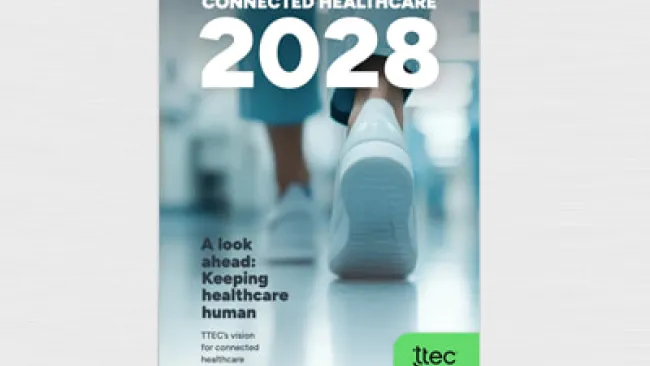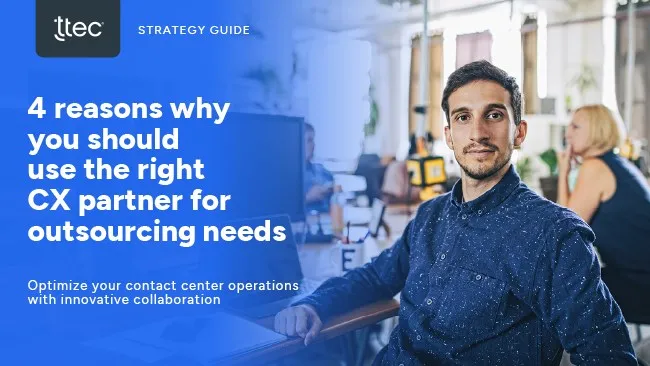Certain times of year are critical for health insurers. Successful open enrollment and annual enrollment periods (AEP) can make or break bottom lines, and companies have a very short window of time to capture new and renewing enrollments that represent most of their growth for the year.
But too often, insurers focus all or most of their attention and resources on member acquisition during these important times of year; they have large-scale ramps, then quickly scale back down once the crunch time has passed. As the market becomes more competitive, digital-first companies disrupt the status quo, and consumer expectations change, insurers need to emphasize member experience throughout the year – not just during enrollment and renewal periods – to deliver more meaningful experiences that demonstrate their value, drive ROI, and stand out from competitors.
Health insurance members traditionally aren’t a very loyal customer base, with 26% saying they are “not loyal at all” to their insurance company, according to Accenture. At the same time, the healthcare industry has been slow to evolve when it comes to customer experience, impeded in part by various complexities of the business – like high administrative costs, aging and siloed technology, and regulatory constraints, to name a few.
So how can insurers deliver the type of great experiences that drive conversions, increase retention, and boost customer satisfaction? It’s no longer enough to seek blanket support. Companies that want to make real gains when it comes to member experience and reduce costs along the way must develop an in-depth knowledge and understanding in several key areas.
Here are three ways to realize the advantages of improved member experience year-round, not just during enrollment periods.
1. Optimize sales with a lead nurturing strategy
Getting high-quality leads and converting them are essential to any organization’s success, but the process doesn’t always get the attention it deserves in the rush to meet enrollment demand surges. This should be a major area of focus for all insurance companies.
Sales leaders should have frequent conversations with the marketing team about ways to fill the top of the funnel. Firing up the marketing engine is key to filling the sales pipeline, and sales and marketing teams should collaborate to target the right consumers, deliver the right offer and messages to them at the right times.
Better prospects lead to higher conversion rates, so everyone benefits by investing the time and effort into finding and nurturing the best leads possible. Once the leads are received, it’s up to the sales team to understand their target market, move them through the funnel with the right product offerings, and eventually close the sale. If you only rely on first call closes, you are missing opportunities and potentially wasting money not having a strategy of how to follow up if the consumer doesn’t enroll at the first engagement. Help your team stay on top of their book of business with an automated, omnichannel, and multi-touchpoint strategy.
But nurturing shouldn’t stop once a member enrolls in a health plan. In many cases, agents never speak to members again once they enroll them. Insurers can foster stronger relationships and brand loyalty with follow-up outreach to members, particularly during the gap time between enrollment and when their plan coverage starts. Member welcome calls, reminders about upcoming preventive care and other touchpoints can go a long way in forming a stronger connection.
The best way to find, nurture, and convert leads is to have a strong sense of who the insurer’s ideal prospects and members are, what they want and need, and how they want to interact with the health plan. Lead nurturing and conversion efforts will only pay off if you’re targeting the right people at the right time.
2. Prioritize member onboarding and retention
Acquiring and retaining members has never been more challenging. Consumers aren’t sticking with the same insurer as long as they used to – and brokers can sell plans from various insurance carriers, which compounds the problem. Companies need to make their member onboarding experience and retention efforts top priorities.
Once a member enrolls, start fostering the relationship and strengthening that connection right away. Just because members enroll during November open enrollment, there’s no need to wait until their plans’ effective date to reach out and welcome them to the plan. Think of all the meaningful interactions and brand awareness that can take place during this period. It’s also an opportunity to remind the member why your plan meets their needs as they continue to receive outreach from many different carriers until the end of the enrollment period.
Once they’re onboarded, keep the conversation going with periodic outreach to retain members. Research shows it costs 5 to 25% less to retain a current member than it does to acquire a new one, and increasing retention rates by just 5% can increase profits by more than 25%, so take the time to nurture relationships with existing members. Keep in contact with members, via their preferred channels, at various points throughout the year – not just when you’re targeting them for enrollment or renewals. It will benefit the bottom line and member experience alike.
3. Dive into data analytics
One meaningful way to truly understand customers is through data analytics. Companies can provide seamless, proactive experiences when they understand their customers and anticipate what they need. Save time and money by knowing what resonates with prospects and members and delivering it via their preferred channels. All those insights can be culled from data generated during various interactions.
Voice of the Customer (VoC) analytics are a great way to gauge how your members feel when interacting with your organization. With the right technology, for instance, a company can analyze inbound calls during open enrollment (year-round too) and make connections between certain aspects of the call – like the tone or the questions asked – and outcomes.
As more health insurers are realizing, there’s growing value in having self-service reporting and analytics capabilities. A strong data analytics platform can yield a wide range of valuable, actionable insights – not only about existing members, but about the sales journey consumers undergo before becoming members. For instance, companies can see how many interactions members have with the company before they enroll, what channels they used, how long the process took, and where there were potential roadblocks. All of this information can then be used to inform marketing and sales efforts throughout the customer experience.
A focused strategy is critical to the omnichannel experiences that consumers expect and insurers need to deliver. With data-driven customer personas, insurers can become smarter in how you identify, target, nurture, acquire and retain members.
How one payer boosted sales by nearly 30%
Focusing on these key areas may represent a major shift for organizations. But if done correctly, there is tremendous upside for the business. Working with a strategic partner that already has in-depth expertise in acquisition, data analytics, lead nurturing, retention, and staffing needs can make all the difference.
For example, when a large regional health plan offering individual and family, Medicare, and employer plans in 10 states grappled with a worker shortage heading into open enrollment, TTEC helped the business improve customer experience while cutting costs. The business shifted some pre-sales work from U.S.-based sales agents to highly skilled offshore workers. This led to 29% growth in sales conversions and a 45% drop in cost per enrollment.
In another instance, a benefits administrator struggled with average wait times – which exceeded 60 minutes – as its customer base grew quickly and open enrollment approached. After analyzing call volume, we recruited and trained 13 work-from-home TTEC associates within three weeks who provided inbound contact center support to the client’s existing team. The results? A 97% decrease in average wait time, a 60% drop in average handle time, and a near tripling of the number of calls handled per hour per associate.
In the health insurance industry, every member touchpoint or engagement is important. It’s critical to engage with consumers and members in meaningful ways that not only demonstrate the value of your brand but also drive positive outcomes across the entire customer journey. With the right tools and people in place, insurers can take member experience to the next level without breaking the bank, forming stronger connections with members along the way.
Focus on the member experience after open enrollment ends
3 growth strategies beyond AEP

















